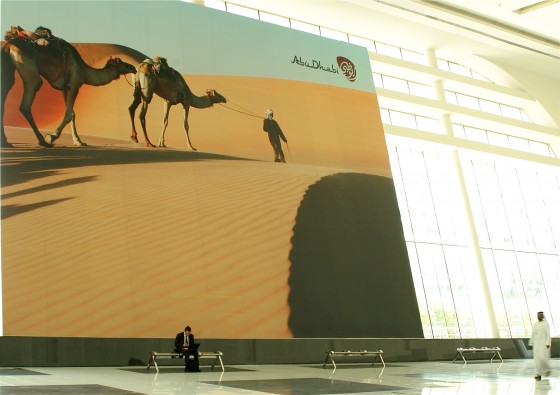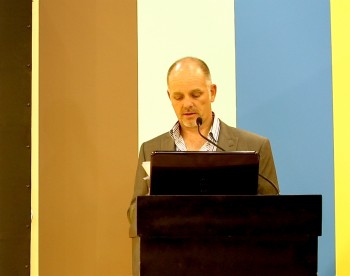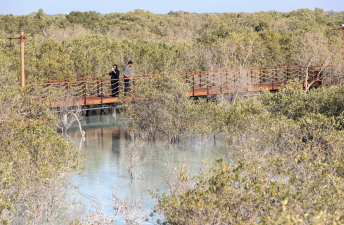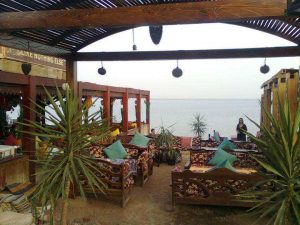 The Managing Director of dwp design in the United Arab Emirates discusses Abu Dhabi’s future at the opening day of Interiors UAE.
The Managing Director of dwp design in the United Arab Emirates discusses Abu Dhabi’s future at the opening day of Interiors UAE.
Abu Dhabi is in a fantastic position to design for the people, according to a leading design professional. Brian Hillesdon, the Managing Director of dwp design in the UAE discussed Dubai’s uni-fuctional building evolution today at the Interiors UAE opening show.
Earlier we shared a somewhat apocalyptic tale about an ant in Dubai (that’s me) inspired by hundreds of soul-less towers. Readers depressed by that story will be pleased that Abu Dhabi has plans to implement mixed-use development that concentrates at least as much on livability as it does on showing off.
 Mr. Hillesdon points out a few buildings that typify the kind of one-dimensional design so iconic in Dubai including the World Trade Center and the Chamber of Commerce.
Mr. Hillesdon points out a few buildings that typify the kind of one-dimensional design so iconic in Dubai including the World Trade Center and the Chamber of Commerce.
Until recently, he said, “there were no restaurants, just offices – no design for the occupants.”
These buildings were built with glitz, glamor, and individualism in mind. They were designed to make statements, not to uplift the people who would actually live in them.
Abu Dhabi already has its fair share of wasteful buildings, including the Capital Gate, also known as the leaning tower of Abu Dhabi, and the Eitsalat Tower which looks like a golf ball. But Hillesdon suggests it doesn’t have to be this way.
“Form must follow function,” he said. The building must work first, and then it must look good. He also noted that economics and culture are among the main factors influencing design.
Although Abu Dhabi is conservative, he said, it is also open-minded, and is uniquely positioned to lead a paradigm shift in the Middle East. Hillesdon also praised the Masdar City initiative.
Co-founder of the Land Art Generator Initiative and Studied Impact, Robert Ferry stepped up next to discuss the International Living Future Institute’s living building challenge – one of the most “aspirational” building codes on earth.
He posed the question: is carbon zero enough?
Apparently not. Even net zero buildings have a carbon debt, according to Ferry, who proposes that true sustainability lies in creating a positive impact. In the UAE, where humidity levels are high and sun is ubiquitous, this is “entirely possible.”
Ferry showed a model of an earth-rammed home that produces more energy than it needs via building integrated photovoltaics, therefore paying back the embodied energy present in building materials. This home even produces its own water by using the sun to capture H2O present in the atmosphere.
Sana, a designer who traveled from Saudi Arabia to attend the show, asked Ferry to discuss the costs associated with this less conventional design. Given that the current supply chain does not yet favor sustainable building materials (which could change as the Masdar experiment goes through its various developmental stages), Ferry pointed to what the UAE really needs: “Clients with vision.”
More building, conservation, and general environmental news straight from the UAE:
EXCLUSIVE: Masdar City Open House Photos
Former Masdar Director Says the UAE Must End Subsidies



